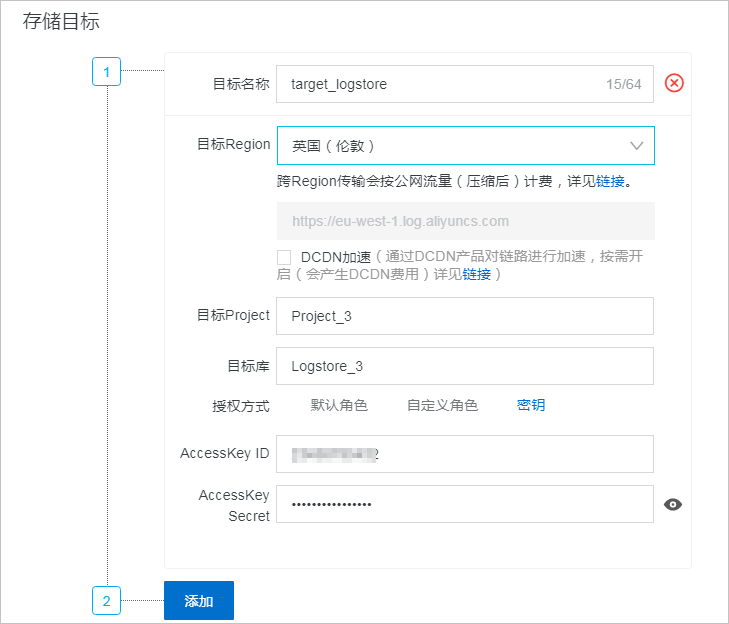日志服務支持對每一個源Logstore配置一個數據加工任務,實現多源Logstore的數據匯總到同一個Logstore。本文介紹多源Logstore數據匯總的典型應用場景和操作步驟。
背景信息
某資訊網站業務分布全球,不同資訊頻道的用戶訪問日志被采集存儲在阿里云不同賬號中的Logstore,如果需要將日志數據匯總到一個Logstore,便于后續的查詢與分析,可以使用e_output函數進行數據加工。
本文以同一目標區域英國(倫敦)的不同Logstore的日志為例,介紹匯總Logstore數據的操作步驟:
賬號1中的原始日志,其Project地域位于英國(倫敦),Project名稱為Project_1,Logstore名稱為Logstore_1。
"日志1" request_id: 1 http_host: example.com http_status: 200 request_method: GET request_uri: /pic/icon.jpg "日志2" request_id: 2 http_host: aliyundoc.com http_status: 301 request_method: POST request_uri: /data/data.php賬號2中的日志,其Project地域為英國(倫敦),Project名稱為Project_2,Logstore名稱為Logstore_2。
"日志1" request_id: 3 host: example.edu status: 404 request_method: GET request_uri: /category/abc/product_id "日志2" request_id: 4 host: example.net status: 200 request_method: GET request_uri: /data/index.html加工目標
將賬號1的Logstore_1中所有
http_status為200的日志事件,輸出到賬號3的Logstore_3中。對于賬號2的Logstore_2中所有
http_status為200的日志事件,將字段名稱host改為http_host、字段名稱status改為http_status(與Logstore1統一),然后輸出到賬號3的Logstore_3中。
步驟一:配置Logstore1的數據加工規則
步驟二:配置Logstore2的數據加工規則
進入賬號2的Logstore_2的數據加工頁面,控制臺操作步驟請參見創建數據加工任務。
在數據加工頁面,配置如下加工規則。對于Logstore_2中所有
http_status為200的日志事件,將字段名稱host改為http_host、字段名稱status改為http_status(與Logstore1統一),然后輸出到賬號3的Logstore_3中。e_if(e_match("status", "200"), e_compose(e_rename("status", "http_status", "host", "http_host"), e_output("target_logstore")))預覽結果

創建數據加工任務,在存儲目標區域,配置目標名稱、目標Region、目標Project、目標Logstore等參數如下,授權方式參數說明請參見創建數據加工任務。

查看匯總結果
在英國(倫敦)地域的Logstore_3中查詢和分析日志,日志示例如下。
"日志1"
request_id: 1
http_host: example.com
http_status: 200
request_method: GET
request_uri: /pic/icon.jpg
"日志2"
request_id: 4
http_host: example.net
http_status: 200
request_method: GET
request_uri: /data/index.html